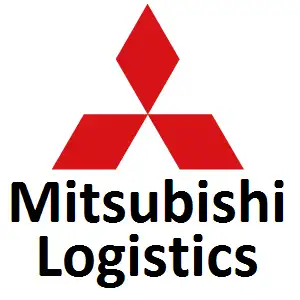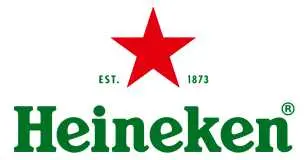
Autonomous Cars Market Growth, Trends and Opportunities 2034
Autonomous Cars Market Size- By Autonomy, By Fuel - Regional Outlook, Competitive Strategies and Segment Forecast to 2034
| Published: Jun-2025 | Report ID: AMIN2525 | Pages: 1 - 260 | Formats*: |
| Category : Automotive & Transportation | |||
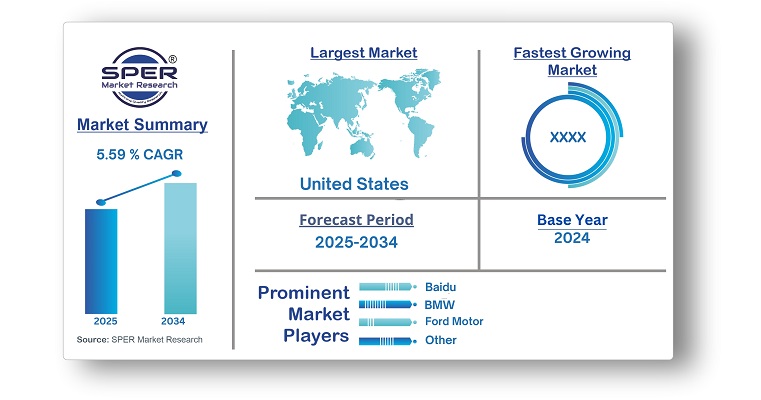

- In October 2024, Tesla unveiled the autonomous car Cybercab, a self-driving robotaxi designed to be affordable and is expected to enter production in the near future. At the "We, Robot" event, Tesla showcased autonomous Model 3 and Model Y vehicles progressing toward unsupervised self-driving capabilities in California and Texas. The company also introduced the Robovan, designed to carry multiple passengers, and highlighted advancements in its humanoid Optimus robots, which are aimed at being cost-effective at scale.
- In August 2024, The BMW Group declared that it is at the forefront of automated driving innovation and that the new BMW 7 Series is the first automobile to integrate Level 2 and Level 3 automation in a single vehicle. BMW's dedication to automation is increasing individual mobility, decreasing collisions, and enhancing traffic efficiency.
| Report Metric | Details |
| Market size available for years | 2021-2034 |
| Base year considered | 2024 |
| Forecast period | 2025-2034 |
| Segments covered | By Autonomy, By Fuel |
| Regions covered | North America, Latin America, Asia-Pacific, Europe, and Middle East & Africa |
| Companies Covered | Baidu, BMW, Ford Motor, General Motors, Hyundai Motor, Mercedes-Benz, Tesla, Toyota Motor, Volkswagen, Waymo. |
- Global Autonomous Cars Market Size (FY’2021-FY’2034)
- Overview of Global Autonomous Cars Market
- Segmentation of Global Autonomous Cars Market By Autonomy (Level 1, Level 2, Level 3, Level 4)
- Segmentation of Global Autonomous Cars Market By Fuel (ICE, Electric, Hybrid)
- Statistical Snap of Global Autonomous Cars Market
- Expansion Analysis of Global Autonomous Cars Market
- Problems and Obstacles in Global Autonomous Cars Market
- Competitive Landscape in the Global Autonomous Cars Market
- Details on Current Investment in Global Autonomous Cars Market
- Competitive Analysis of Global Autonomous Cars Market
- Prominent Players in the Global Autonomous Cars Market
- SWOT Analysis of Global Autonomous Cars Market
- Global Autonomous Cars Market Future Outlook and Projections (FY’2025-FY’2034)
- Recommendations from Analyst
- 1.1. Scope of the report
- 1.2. Market segment analysis
- 2.1. Research data source
- 2.1.1. Secondary Data
- 2.1.2. Primary Data
- 2.1.3. SPERs internal database
- 2.1.4. Premium insight from KOLs
- 2.2. Market size estimation
- 2.2.1.T op-down and Bottom-up approach
- 2.3. Data triangulation
- 4.1. Driver, Restraint, Opportunity and Challenges analysis
- 4.1.1. Drivers
- 4.1.2. Restraints
- 4.1.3. Opportunities
- 4.1.4. Challenges
- 5.1. SWOT Analysis
- 5.1.1. Strengths
- 5.1.2. Weaknesses
- 5.1.3. Opportunities
- 5.1.4. Threats
- 5.2. PESTEL Analysis
- 5.2.1. Political Landscape
- 5.2.2. Economic Landscape
- 5.2.3. Social Landscape
- 5.2.4. Technological Landscape
- 5.2.5. Environmental Landscape
- 5.2.6. Legal Landscape
- 5.3. PORTERs Five Forces
- 5.3.1. Bargaining power of suppliers
- 5.3.2. Bargaining power of buyers
- 5.3.3. Threat of Substitute
- 5.3.4. Threat of new entrant
- 5.3.5. Competitive rivalry
- 5.4. Heat Map Analysis
- 6.1. Global Autonomous Cars Market Manufacturing Base Distribution, Sales Area, Product Type
- 6.2. Mergers & Acquisitions, Partnerships, Product Launch, and Collaboration in Global Autonomous Cars Market
- 7.1. Level 1
- 7.2. Level 2
- 7.3. Level 3
- 7.4. Level 4
- 8.1. ICE
- 8.2. Electric
- 8.3. Hybrid
- 9.1. Global Autonomous Cars Market Size and Market Share
- 10.1. Asia-Pacific
- 10.1.1. Australia
- 10.1.2. China
- 10.1.3. India
- 10.1.4. Japan
- 10.1.5. South Korea
- 10.1.6. Rest of Asia-Pacific
- 10.2. Europe
- 10.2.1. France
- 10.2.2. Germany
- 10.2.3. Italy
- 10.2.4. Spain
- 10.2.5. United Kingdom
- 10.2.6. Rest of Europe
- 10.3. Middle East and Africa
- 10.3.1. Kingdom of Saudi Arabia
- 10.3.2. United Arab Emirates
- 10.3.3. Qatar
- 10.3.4. South Africa
- 10.3.5. Egypt
- 10.3.6. Morocco
- 10.3.7. Nigeria
- 10.3.8. Rest of Middle-East and Africa
- 10.4. North America
- 10.4.1. Canada
- 10.4.2. Mexico
- 10.4.3. United States
- 10.5. Latin America
- 10.5.1. Argentina
- 10.5.2. Brazil
- 10.5.3. Rest of Latin America
- 11.1. Baidu
- 11.1.1. Company details
- 11.1.2. Financial outlook
- 11.1.3. Product summary
- 11.1.4. Recent developments
- 11.2. BMW
- 11.2.1. Company details
- 11.2.2. Financial outlook
- 11.2.3. Product summary
- 11.2.4. Recent developments
- 11.3. Ford Motor
- 11.3.1. Company details
- 11.3.2. Financial outlook
- 11.3.3. Product summary
- 11.3.4. Recent developments
- 11.4. General Motors
- 11.4.1. Company details
- 11.4.2. Financial outlook
- 11.4.3. Product summary
- 11.4.4. Recent developments
- 11.5. Hyundai Motor
- 11.5.1. Company details
- 11.5.2. Financial outlook
- 11.5.3. Product summary
- 11.5.4. Recent developments
- 11.6. Mercedes-Benz
- 11.6.1. Company details
- 11.6.2. Financial outlook
- 11.6.3. Product summary
- 11.6.4. Recent developments
- 11.7. Tesla
- 11.7.1. Company details
- 11.7.2. Financial outlook
- 11.7.3. Product summary
- 11.7.4. Recent developments
- 11.8. Toyota Motor
- 11.8.1. Company details
- 11.8.2. Financial outlook
- 11.8.3. Product summary
- 11.8.4. Recent developments
- 11.9. Volkswagen
- 11.9.1. Company details
- 11.9.2. Financial outlook
- 11.9.3. Product summary
- 11.9.4. Recent developments
- 11.10. Waymo
- 11.10.1. Company details
- 11.10.2. Financial outlook
- 11.10.3. Product summary
- 11.10.4. Recent developments
- 11.11. Others
SPER Market Research’s methodology uses great emphasis on primary research to ensure that the market intelligence insights are up to date, reliable and accurate. Primary interviews are done with players involved in each phase of a supply chain to analyze the market forecasting. The secondary research method is used to help you fully understand how the future markets and the spending patterns look likes.
The report is based on in-depth qualitative and quantitative analysis of the Product Market. The quantitative analysis involves the application of various projection and sampling techniques. The qualitative analysis involves primary interviews, surveys, and vendor briefings. The data gathered as a result of these processes are validated through experts opinion. Our research methodology entails an ideal mixture of primary and secondary initiatives.
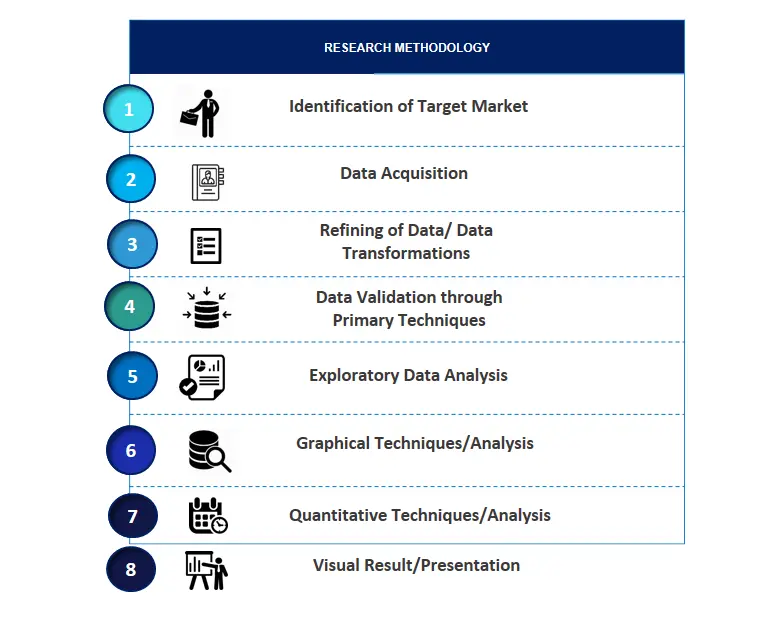
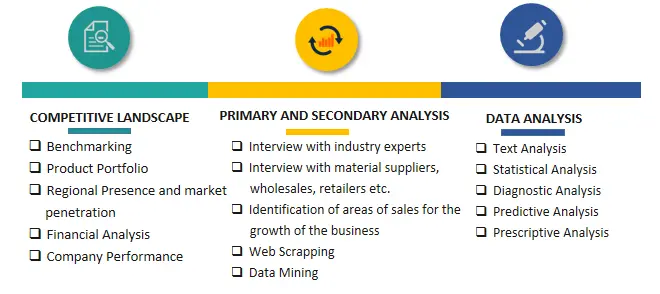

Frequently Asked Questions About This Report
PLACE AN ORDER
Year End Discount
Sample Report
Pre-Purchase Inquiry
NEED CUSTOMIZATION?
Request CustomizationCALL OR EMAIL US
100% Secure Payment






Related Reports
Our Global Clients
Our data-driven insights have influenced the strategy of 200+ reputed companies across the globe.











